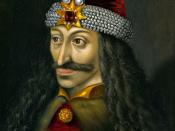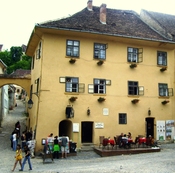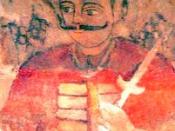ENGL 106
Essay 3
4/29/10
Vlad III Trepes the Impaler
The Dracula Myth
Vampire mythology and folklore is recorded in many cultures throughout the world. According to speculation by literary historian Brian Frost that the "belief in vampires and bloodsucking demons is as old as man himself", and may go back to "prehistoric times"� The term vampire was not popularized until the early 18th century due increased vampire superstition and legends from Eastern Europe. The vampire entity we know today originates most exclusively from South Eastern Europe because ethnic group from the region began to record and publish their oral traditions.�
The origins of vampire beliefs range from ignorance of the body's post mortem decomposition cycle to premature burial. Slavic superstition is most relevant as it permeates contemporary concepts of the vampire. Vlad III Trepes, Prince of Wallachia, more commonly known as the Impaler, is the mythical character Dracula, who epitomizes the vampire legend.
Dracula, meaning "Son of the Dragon" in Romanian, is derived from Vlad's father, Vlad Dracul, whose moniker suggests his membership to the Order of the Dragon, a group of nobles fighting in the name of Christianity.�
When Vlad came to power, he ruled with the intention of exacting revenge on the boyars, for killing his father and eldest brother. At the time the boyars were and aristocratic group with highest rank in Bulgarian, Wallachain, and Moldavian aristocracies. Although it took him nearly a decade to do so, his task was competed on Easter Sunday in 1457. Vlad immediately impaled the old boyars and their family. He marched the younger and healthier nobles and their families north to Targoviste to rebuild one of his father old fortresses. There he could monitor movement of his enemies, the Hungarians coming through Transylvania and the Turks coming from the Ottoman...


